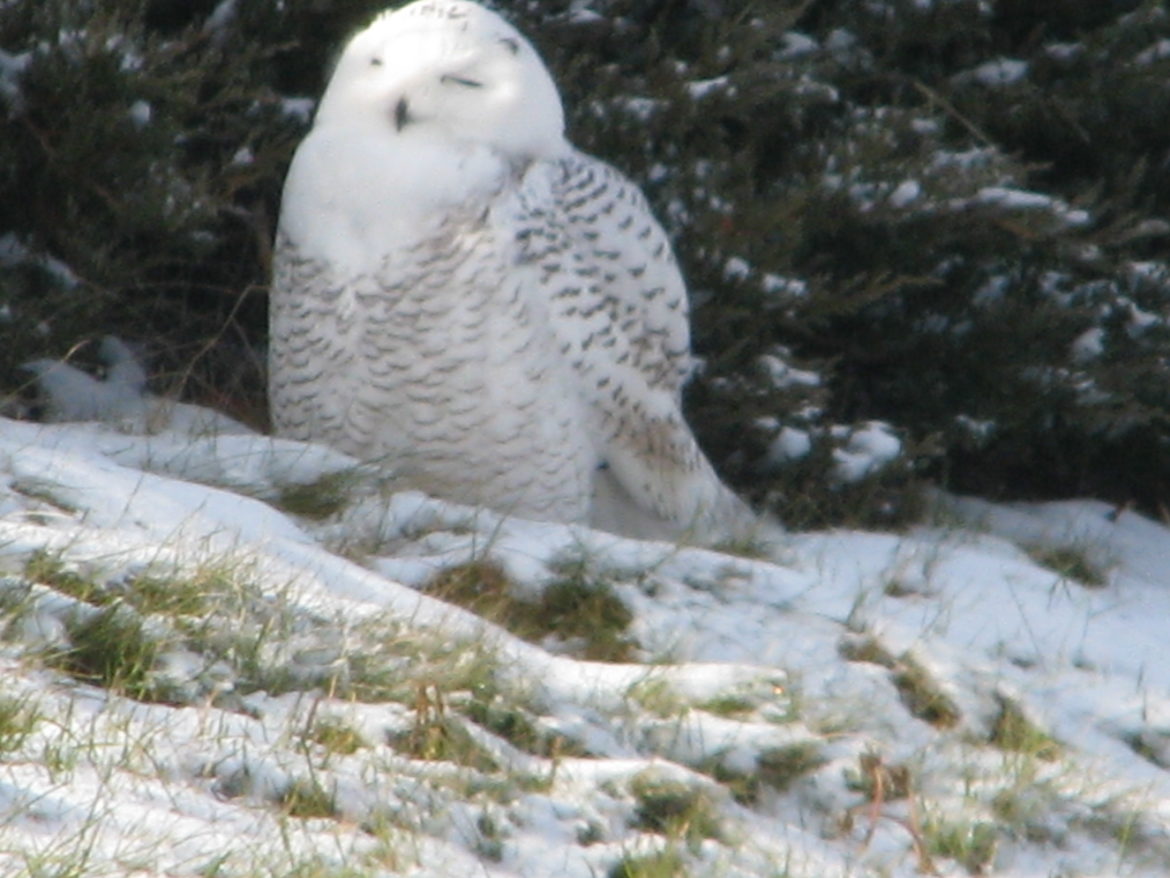
By PAULA TRACY, InDepthNH.org
SEABROOK – New Hampshire has seven owl species, and this year, a visitor or two from the north are joining in all that hooting.
Snowy owls have been seen along the Seacoast recently battling for territory with each other, swooping down to devour voles in the marsh and delighting birders who flock to the shore and marsh for a glimpse or photograph from a respectable distance.
They join the barred owl, the boreal owl, the Eastern screech owl, the great horned owl, the long-eared owl, the Northern saw-whet owl, and the short-eared owl as calling New Hampshire home.
Michael Marchand, coordinator of the Nongame and Endangered Wildlife Program within the New Hampshire Fish and Game Department, said this year of COVID-19 has been tough on humans but it’s been great for coastal seabird population growth from piping plovers to terns on the Isles of Shoals.
All had banner reproductive seasons. And it has been great for birders and novice bird enthusiasts.
Marchand said birding has become wildly popular among the public, cooped up inside their homes due to the pandemic, with birdseed a hot commodity at feed stores.
A number of birds not normally seen around here are now visiting because of the abundance of natural seeds in the fields and forests, Marchand said, including the pine siskin, evening grosbeaks, red-breasted nuthatches, and crossbills.
But the blockbuster bird that has everyone aflutter is the snowy owl seen near Salisbury, Mass., and Seabrook, N.H., beaches.
It is too early to tell if there may be more on their way from the Arctic, but they usually show up in low-food years later.
The last “irruption” of snowy owls in the state was in the late fall and winter of 2013 and 2014. That was a year that biologists believe the owls either had lots of snowy owl company in the arctic, due to reproduction and/or a bust in the population of prey, such as moles, lemmings, and voles, though that theory may be challenged.
We just don’t know when or whether we will see many snowy owls here, bottom line.
I snapped this photo in November 2013 in the town of Merrimack with a 35 mm SLR camera which was nothing great.
I was at a distance of over 200 yards, sitting in my car which served as a pretty good bird blind, so it is a bit blurry, but the sighting for me was breath-taking.
These are the largest owls in North America.
New Hampshire has a nice collection of owls, who are harder to see than to hear, with the most notable presence the barred owl who shouts something that sounds like “Who Cooks for YOU? WHO? WHO?”
Marchand said Logan International Airport in East Boston has had regular sightings of snowy owls over the past few decades.
They like the airport’s snowy winter habitat of wide-open flat fields to hunt, but sometimes they have to be relocated for the safety of the planes and their own.
The marshes and areas of New Hampshire and Northern Massachusetts seacoast is also a lot like their home turf in winter.
Since 1981, Norman Smith, director of the Massachusetts Audubon Blue Hills Trailside Museum, has been banding birds.
The organization urges those who go in search of a sighting to keep their distance, stay in their cars, and not to further stress these owls in any way. Some good information and guidelines, along with a link to track banded owls are here.
https://www.massaudubon.org/get-outdoors/wildlife-sanctuaries/blue-hills-trailside-museum/our-work/snowy-owl-project/viewing-snowy-owls.
In this COVID-19 winter of social distancing and in some cases, forced isolation, picking up a bird book and buying a feeder and some seed make a lot of sense.
I put up my feeders once the weather turns cold in November and it is about the only bright spot in this normally dreary month.
I have a feeder right here stuck to the glass outside my home office. It is filled with black oiled sunflower seeds and I normally get visitors including tufted titmice and black-capped chickadees and although some do not like them, I love the blue jays for their color and clumsy tenacity to get at the seed.
Bring a little color and live-action into your life at home, or pick up some binoculars and head to the seacoast where you may see a scrum of birders with their tripods and scopes set up along the marshes, and follow the direction of their lenses to possibly see something really dramatic.
But stay in the car and keep it safe in this pandemic.
Paula Tracy’s first big hike was in 1975 with classmates from Concord up Mount Lafayette with teacher and outdoor enthusiast Ned Bergman. She was 13 and was immediately captured by the wonders of New Hampshire’s great outdoors. It would lead to a lifetime love of exploring the woods, water, and wildlife in the Granite State. As a staff reporter, for 25 years at the NH Union Leader and then for WMUR.com, she has written about the subject extensively and continues here with the hope of connecting New Hampshire’s residents with their own backyard.
